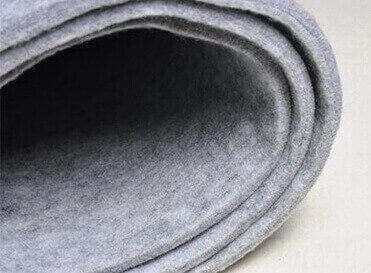Spunlaced Nonwoven Fabric
Here’s how Spunlaced Nonwoven Fabric is typically produced:
- Fiber Preparation:
- Raw fibers (natural or synthetic) are opened, cleaned, and blended.
- Web Formation:
- The fibers are laid down randomly to form a loose web using carding or airlaying machines.
- Hydroentanglement:
- The web passes through high-pressure water jets, which entangle the fibers together to form a fabric.
- Drying and Finishing:
- Excess water is removed from the fabric, and it is dried using hot air.
- Optional finishing treatments like calendaring (smoothing) or chemical treatments (for softness or other properties) may be applied.
- Winding and Quality Control:
- The finished fabric is wound onto rolls and undergoes quality checks to ensure it meets specifications for strength, thickness, and other properties.

key Characteristics
Softness: Spunlaced fabrics are known for their soft and gentle feel, making them comfortable for use in sensitive applications.
Strength: They exhibit good tensile strength and durability, which is important for withstanding handling and use in various products.
Absorbency: Depending on the type of fibers used (like cotton, viscose, or blends), spunlaced fabrics can be highly absorbent, making them ideal for products like wipes and medical dressings.
Lint-free: Spunlaced fabrics typically have low linting properties, which is advantageous in applications where cleanliness and hygiene are critical.
Breathability: They are breathable fabrics, allowing for good air permeability.
Versatility: Spunlaced nonwoven fabrics can be manufactured in various weights, thicknesses, and fiber compositions to meet specific performance requirements.
Drapeability: They have good drape characteristics, conforming well to shapes and contours.
Smooth Surface: The surface of spunlaced fabrics is generally smooth, making them suitable for applications where a soft touch is desired.
Biodegradability: Depending on the fibers used, spunlaced fabrics can be biodegradable, contributing to sustainability efforts.
Chemical Compatibility: They can be treated or engineered to have specific chemical resistances, enhancing their suitability for different environments and applications.
Application

MEDICAL
Disposable KN95/N95 mask

CLOTHING
Clothing interlining fabric, artificial leather base fabric/shoe lining

HOUSEHOLD
Nonwoven curtains, carpets

AUTOMOTIVE
Car interior lining

CONSTRUCTION
Asphalt felt base fabric

GEOTEXTILE
Geotextile

INDUSTRY
PET skeleton fabric
Spunlaced Nonwoven Fabric
Spunlaced Nonwoven Fabrics spray high-pressure fine water onto one or more layers of fiber webs to entangle the fibers with each other, thereby strengthening the fiber webs.






